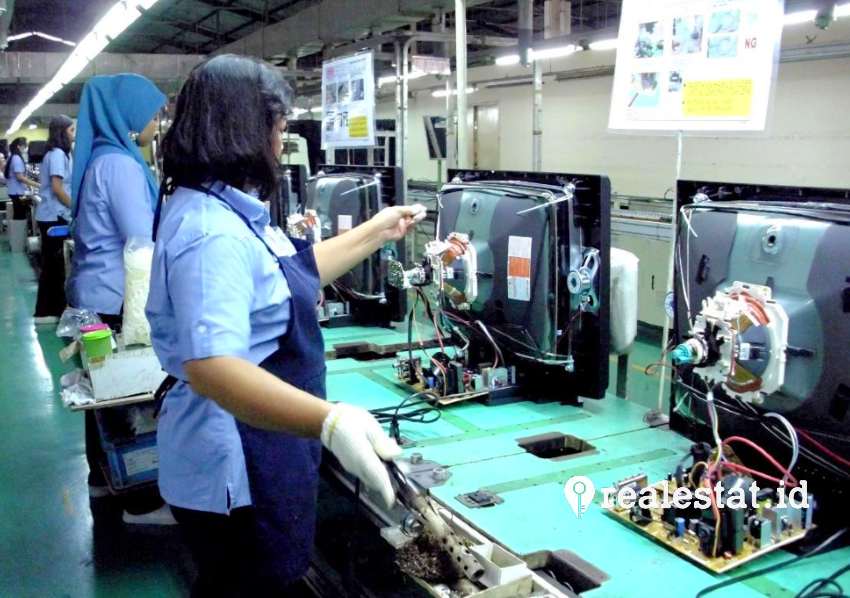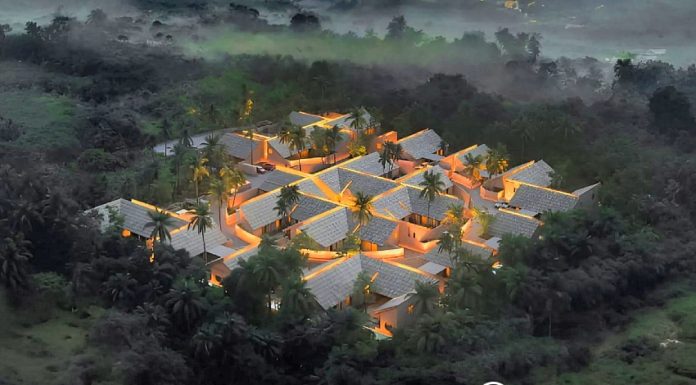RealEstat.id (Jakarta) – In its annual ranking of the most suitable locations for global manufacturing among 48 countries in Europe, the Americas and Asia Pacific, Cushman & Wakefield has assessed that China remains the most attractive manufacturing hub globally from an operating conditions and cost competitiveness perspective.
The annual Global Manufacturing Risk Index (MRI) scores each country against 20 variables that make up the three final weighted rankings which cover conditions, cost and risk. The data underpinning the MRI comes from a variety of reliable sources, including the World Bank, UNCTAD and Oxford Economics.
Read More: Explore Workplace and Operational Efficiency in the Age of COVID-19
Baseline Scenario
From a baseline scenario ranking that looks equally at operating conditions and cost competitiveness but does not consider impact from the current pandemic, China retains the top spot, followed by the United States in second. Diversification combined with a move up the value chain in order to focus on telecom, hi-tech (40% of robots produced globally are made in China), and computers have helped the Chinese manufacturing sector remain somewhat resilient to trade wars.
| Country | 2019 | 2020 |
| China | 1 | 1 |
| United States | 2 | 2 |
| India | 4 | 3 |
| Czech Republic | 6 | 4 |
| Canada | 5 | 5 |
“Both China and the U.S. offer a large consumer market, ample labor supply and incentives at both the federal/national and state level, as well as an established infrastructure network,” said Jason Tolliver, global head of newCommerce research at Cushman & Wakefield. “With the rapid adoption of technology into production processes, the U.S. and its higher-cost workforce could start to be better aligned to compete with China for manufacturing jobs.”
Cost Scenario
The MRI cost scenario places greater emphasis on cost reduction to give a higher score to countries where operating costs, including labor are lower. Indonesia retains its top fifth position from last year while China retains its lead position. Vietnam and India jumped to second and third positions respectively.
| Country | 2019 | 2020 |
| China | 1 | 1 |
| Vietnam | 4 | 2 |
| India | 6 | 3 |
| Malaysia | 3 | 4 |
| Indonesia | 5 | 5 |
Wira Agus, Director, Industrial & Land Sales, Cushman & Wakefield Indonesia said “Indonesia’s ranking on cost competitiveness should improve with the government’s plan to re-distribute the manufacturing hubs to outside of Java. Ear-marked as Special Economic Zones, these provinces have been granted tax incentives to accelerate the diversification of manufacturing hubs into the provinces. The government has also plans to improve the logistics infrastructure by developing the “sea toll”.
Read More: Adjusting Property Investment and Property Development During The Pandemic
Agus added that “In addition to improving physical infrastructure, Indonesia has to raise the skills levels of the Indonesian labour force especially in provinces outside of Java to encourage more manufacturers to take the step to move out of Java.”
“The manufacturing shift towards Southeast Asia has been a long time in the making. As minimum wages in China grew, more orders for labor intensive products, such as clothes, toys and shoes, shifted to less expensive locations in India, Bangladesh, Myanmar and Vietnam,” said Christine Li, Head of Research, Singapore and Southeast Asia. “However, despite government initiatives to attract manufacturers by Southeast Asian countries, China retains a clear infrastructure advantage with the ability to efficiently move goods via road, rail or sea transport.”
Risk Scenario
The MRI’s risk scenario favors countries presenting lower levels of economic and political risk, while considering rising geopolitical risk. In this scenario, Canada and the United States ranked first and second in 2020, supported by their natural resources, ample labor pools, federal and state incentives, large consumer markets and infrastructure, especially in a less predictable and less secure global environment. Transparency, investments in infrastructure networks and the absence of geopolitical concerns contributed to higher ranking positions for both Singapore and Germany, third and fourth respectively.
| Country | 2019 | 2020 |
| Canada | 2 | 1 |
| United States | 1 | 2 |
| Singapore | 6 | 3 |
| Germany | 7 | 4 |
| China | 5 | 5 |
The 2020 MRI also includes analysis of the impact of COVID-19 on the global manufacturing sector and ranked countries by their projected ability to restart their manufacturing sectors once confinement measures are relaxed and business starts to return to normal. This “bounce-back-ability” ranking is based on six key variables and is weighted according to its estimated contribution to manufacturing sector recovery. Several countries in Asia Pacific including China, Thailand, South Korea, Australia and Japan are assessed to be in the top quartile in terms of a fast recovery.
COVID-19 and the resultant disruption in economic activity across the world has re-ignited the debate about the benefits of re-shoring. However feasible and desirable, reshoring on a mass scale is not realistic and will not happen in the immediate term. Instead, to build resilience in the event of a second pandemic wave or second lockdown period, manufacturers are more likely to address the two most pressing vulnerabilities: materials and component sourcing and supply chain disruptions.
Read More: Riyadh Group Indonesia Officially Enters Healthcare Services Business
The most likely measures taken by manufacturers in reaction to the COVID-19 pandemic are:
• Immediate- to short-term: Holding more product and component inventories.
• Medium-term: Diversifying component sourcing including an emphasis on localising or “nearshoring” components to be closer to plants while holding more inventories.
• Long-term: Reshoring for some sectors, locating plants and component sources closer to each other as well as supply chain and production line restructuring that would make just-in-time inventory management possible again.
“The current pandemic leaves many unanswered questions as to what is in store for the global manufacturing sector,” said Tolliver. “We’re optimistic about its future, but it will ultimately depend on the industry’s components that are currently flourishing, as well as those countries and manufacturers that are still operable during the current onset of new challenges.”






